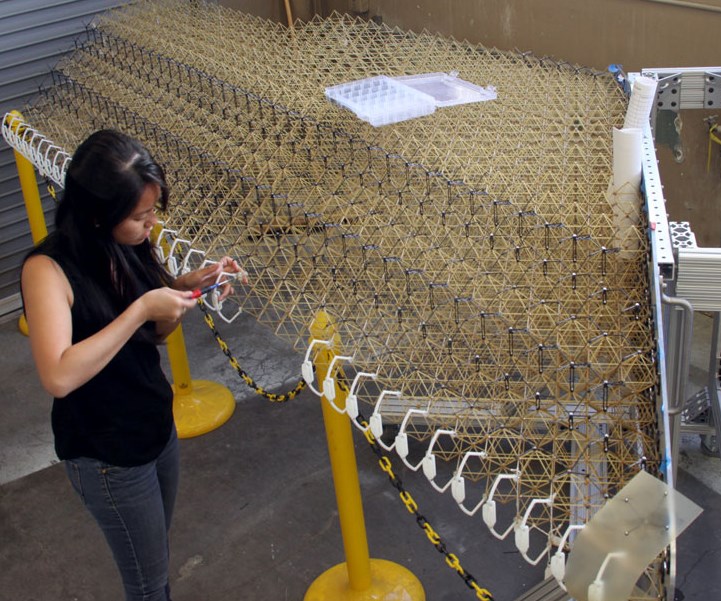MIT and NASA Engineers Design New Airplane Wing with Movable Surfaces
Researchers say the new wing could provide a significant boost in aircraft production, flight and maintenance efficiency.
The Massachusetts Institute of Technology says that a team of engineers has built and tested a new kind of airplane wing that is assembled from hundreds of small identical pieces so that the wing can change shape to control the plane’s flight.
The MIT and NASA researchers say that the new wing could provide a significant boost in aircraft production, flight and maintenance efficiency.
David Chandler from the MIT News Office says the new wing design was tested in a NASA wind tunnel and is described in a paper in the journal Smart Materials and Structures, co-authored by research engineer Nicholas Cramer at NASA Ames in California; MIT alumnus Kenneth Cheung, now at NASA Ames; Benjamin Jenett, a graduate student in MIT’s Center for Bits and Atoms; and eight others.
“Instead of requiring separate movable surfaces, such as ailerons, to control the roll and pitch of the plane as conventional wings do, the new assembly system makes it possible to deform the whole wing — or parts of it — by incorporating a mix of stiff and flexible components in its structure,” Chandler writes. “The tiny subassemblies that are bolted together to form an open, lightweight lattice framework are then covered with a thin layer of similar polymer material as the framework.”
View the entire article HERE
Related Content
-
Pulling Out All the Stops
Evolving coatings and finishes for automotive brake components.
-
Finishing Systems Provider Celebrates 150 Years, Looks to Future
From humble beginnings as an Indiana-based tin shop, Koch Finishing Systems has evolved into one of the most trusted finishing equipment providers in the industry.
-
10 Anodizing Best Practices
Following this list of guidelines can help to increase the performance, cost effectiveness and quality for your anodizing operation.
















